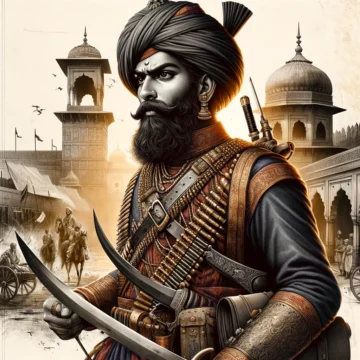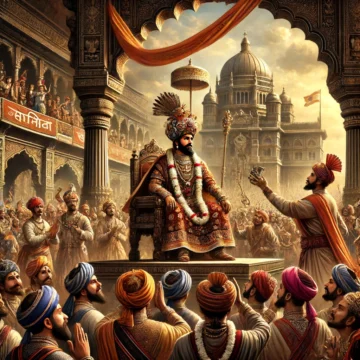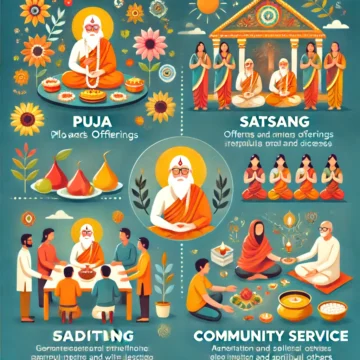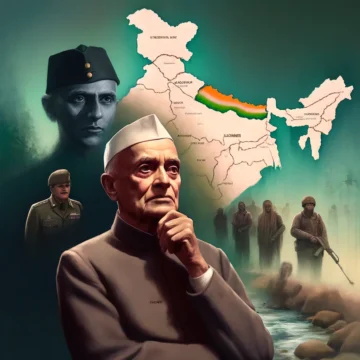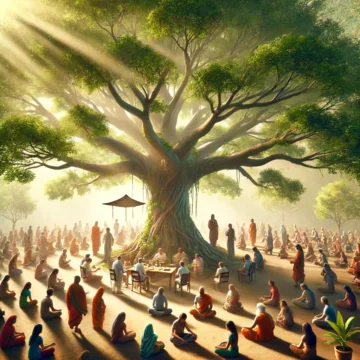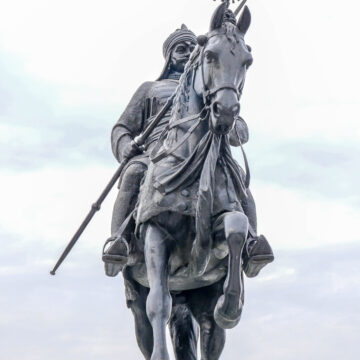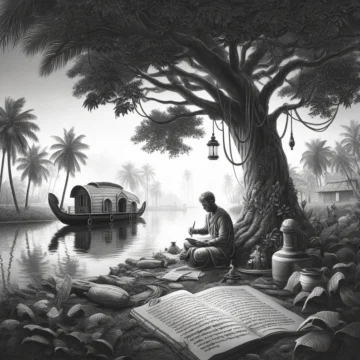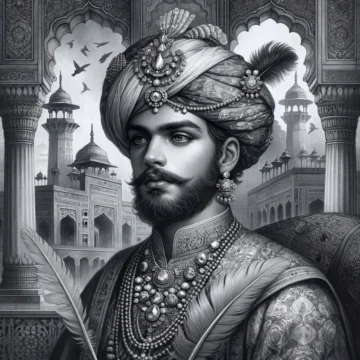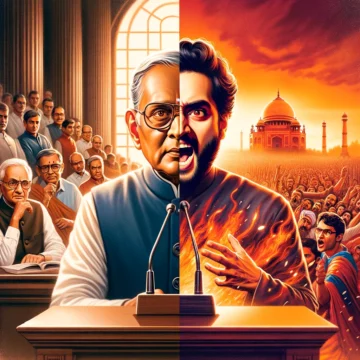Nana Saheb, born Dhondu Pant on May 19, 1824, was a pivotal leader in the Indian Rebellion of 1857. Raised in Bithur near Kanpur, he opposed British policies, particularly the Doctrine of Lapse, which denied him his pension and estate. His leadership included the capture and siege of Kanpur and alliances with Tatya Tope and Rani Lakshmi Bai. Despite Kanpur's fall and his retreat to Nepal, Nana Saheb remains a symbol of resistance against British rule. His legacy is commemorated through cultural references, memorials, and educational curricula in contemporary India.
Chhatrapati Shivaji Maharaj Coronated: Rise of Nationalist Icon
Delve into the significant coronation of Chhatrapati Shivaji Maharaj, a landmark event heralding Hindu nationalism against Mughal oppression. This historic ceremony, steeped in rich rituals and symbolism, marks a major turning point in the Maratha Empire's history, illustrating Shivaji's profound impact on Indian heritage and his enduring legacy as a Hindu nationalist icon
Maratha Confederacy and Third Anglo-Maratha War
Delve into the Third Anglo-Maratha War's profound impact as it signified the end of the Maratha Confederacy and ushered in British dominance. This pivotal conflict reshaped India's political terrain, extinguishing the era of Maratha power and setting the stage for British colonial rule, fundamentally altering the nation's history and governance.
Guru Purnima: Celebrating the Revered Teacher-Student Tradition
Explore the rich traditions of Guru Purnima, a festival honoring the sacred Guru Shishya Parampara through rituals like Puja, Satsang, and Meditation. This day marks a pivotal moment for introspection and renewal, celebrating the enduring wisdom of Gurus across generations.
Jawaharlal Nehru: Continued British Raj Legacy Post-Independence
Explore the lesser-known aspects of Jawaharlal Nehru's leadership, focusing on the controversial policies and administrative decisions that have shaped modern India. This critical analysis delves into the complexities of his tenure, examining the enduring impacts on India's political landscape, and highlighting the debates that continue to surround his legacy in shaping a post-colonial nation.
Sanatana Dharma: Secular and Inclusive Values of Hindu Philosophy
Explore the profound teachings of Sanatana Dharma, which emphasize inclusivity and collective well-being through ancient scriptures. This blog delves into how these principles of Hindu philosophy resonate with modern societal challenges, fostering peace and unity across diverse communities under the symbolic shelter of an ancient, all-encompassing tree.
Maharana Pratap: History Unveiled
Explore the life of Maharana Pratap, a symbol of Rajput valor and resistance against Mughal dominance. Born on May 9, 1540, in Kumbhalgarh, Rajasthan, Pratap's legacy as the fierce protector of Mewar resonates through Indian history. His unwavering commitment to the sovereignty of Mewar is celebrated in numerous memorials, and his tactics in guerrilla warfare are studied for their brilliance. His legendary battle at Haldighati in 1576 against the Mughals marked a significant point in his reign, showcasing his strategic prowess and enduring spirit. This essay delves deep into his battles, governance, and the indelible mark he left on Rajputana and beyond
Malayalam Poets and Vyloppilli Sreedhara Menon
Vyloppilli Sreedhara Menon's poetry captures the essence of Kerala's cultural and natural landscapes. His works like "Mampazham" and "Kaipavallari" not only reflect the social issues of his time but also resonate deeply with the emotions and experiences of the common man. Through his mastery in blending classical Malayalam poetic forms with modernist themes, Menon created a unique voice that remains influential in Malayalam literature today. His contributions highlight a delicate balance of tradition and modernity, making his literary achievements a cornerstone of Malayalam poetry.
Mughal Empire History and Jahandar Shah
Jahandar Shah's brief tenure as emperor from 1712 to 1713 marked a crucial phase in the Mughal Empire's history, highlighting the challenges of governance and stability within a fracturing dynasty. As the eldest son of Bahadur Shah I, his rise to power was paved with a bloody succession war, underscoring the empire's internal strife. His reign, though short, was significant, characterized by his reliance on the influential noble Zulfiqar Khan, whose policies aimed to stabilize the empire's finances but ultimately failed to halt its decline. This period illustrates the complexities of leadership and the pivotal role it plays in the sustenance or deterioration of a great empire. Jahandar Shah's story is a testament to the volatile dynamics of Mughal politics and a reminder of how quickly fortunes can turn in the corridors of power.
Indian Freedom Fighters: Legacy of Gopal Krishna Gokhale
As one of the prominent Indian freedom fighters, Gopal Krishna Gokhale played a pivotal role in the early years of India's struggle against British colonial rule. Born on May 9, 1866, in Ratnagiri, Maharashtra, Gokhale's contributions as a senior leader of the Indian National Congress and a distinguished social reformer were significant. His diplomatic skills and steadfast principles led him to the presidency of the Congress in 1905, advocating for self-rule through gradual and constitutional reforms. Gokhale’s commitment to moderate nationalism and his focus on elevating the Indian elite's status underscored his strategic approach to engaging with colonial authorities through dialogue and legislative advocacy. His founding of the Servants of India Society aimed to prepare the nation for self-governance by educating and reforming society from within, further cementing his legacy as a reformer. The juxtaposition of Gokhale’s philosophies with those of Bal Gangadhar Tilak offers profound insight into the diverse strategies that shaped the struggle of Indian freedom fighters, highlighting the complex interplay between moderate reform and radical activism in their quest for self-rule.


